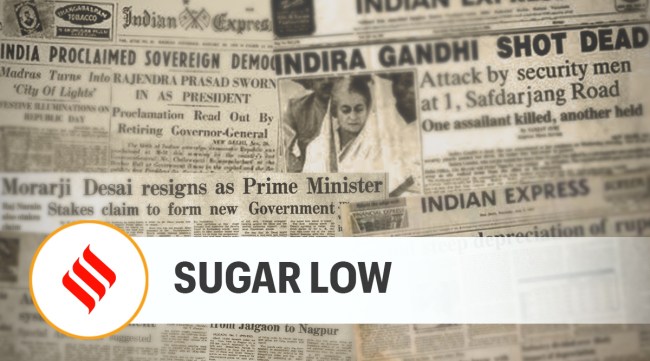Opinion Sugar low: Enabling supply response, not creating policy uncertainty, is the only durable solution to supply-side inflation
Unlike in wheat, where government estimates of the size of this year's crop seem highly optimistic, there's no debate over sugar output. And its prices have hardly risen; nor do they look like going up.
 While the move to make imports duty-free makes sense — retail inflation in edible oils was at 17.28 per cent year-on-year in April — the same does not hold for export bans and restrictions.
While the move to make imports duty-free makes sense — retail inflation in edible oils was at 17.28 per cent year-on-year in April — the same does not hold for export bans and restrictions. The Narendra Modi government seems to be going all out to control food inflation. After the unexpected May 13 notification banning export of wheat, it has now “restricted” sugar shipments, besides scrapping all duties and cesses on crude soyabean and sunflower oil imports. While the move to make imports duty-free makes sense — retail inflation in edible oils was at 17.28 per cent year-on-year in April — the same does not hold for export bans and restrictions. Sugar production in 2021-22 (October-September) is estimated at an all-time high of 35.5 million tonnes (mt). With opening stocks of 8.5 mt, the total availability at 44 mt is more than comfortable to meet the domestic consumption requirement of about 27 mt. Unlike in wheat, where government estimates of the size of this year’s crop seem highly optimistic, there’s no debate over sugar output. And its prices have hardly risen; nor do they look like going up.
True, the government has not banned, but only decided to “regulate” and allow export of sugar “with specific permission”. It has further sought to cap total exports at 10 mt for 2021-22. This comes even as the contracts signed (around 9 mt) and quantities actually shipped out (7.8 mt) have already surpassed last year’s record of 7 mt. Given that exports even in the natural course may not cross 10 mt, it prompts the question: What was the need to announce restrictions in the first place? The ban on wheat exports, just days after official claims about India being ready to “feed the world”, not only dented the country’s image as a reliable global supplier, but it has also caused huge losses to Indian farmers and traders, who had held back their crop or entered into contracts for supplying to big export houses. Sugar importers and domestic millers have every reason to ask: What is the guarantee that its exports, too, will not soon be moved from the “restricted” to “prohibited” category?
The Modi government’s discomfort with food inflation — at 8.38 per cent in April, it was higher than the overall annual retail inflation of 7.79 per cent — is understandable. One must also appreciate its recent decision to slash excise duties on diesel and petrol. Since there’s not much that the Reserve Bank of India can do about fuel and food inflation, a lot hinges on the government’s fiscal and supply-side management measures. But such measures should not be turning the back on reforms. Export curbs and stocking limits (imposed last year on the pulses trade) will make farmers and agri-businesses wary of expanding acreages or investing in supply chain infrastructure and developing markets. The government needs to realise that enabling supply response, and not creating policy uncertainty, is the only durable solution to supply-side inflation.
This editorial first appeared in the print edition on May 26, 2022 under the title ‘Sugar low’.






